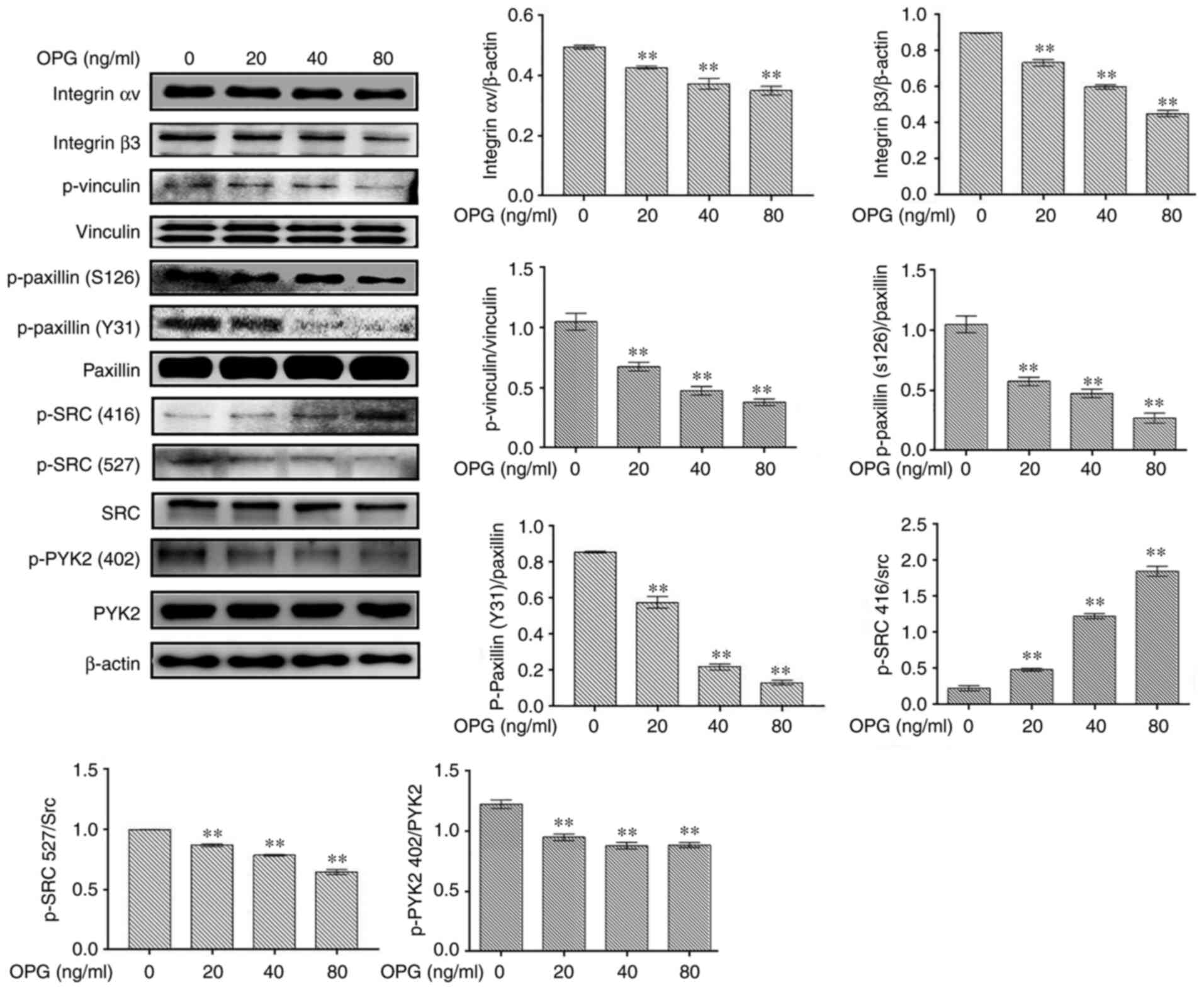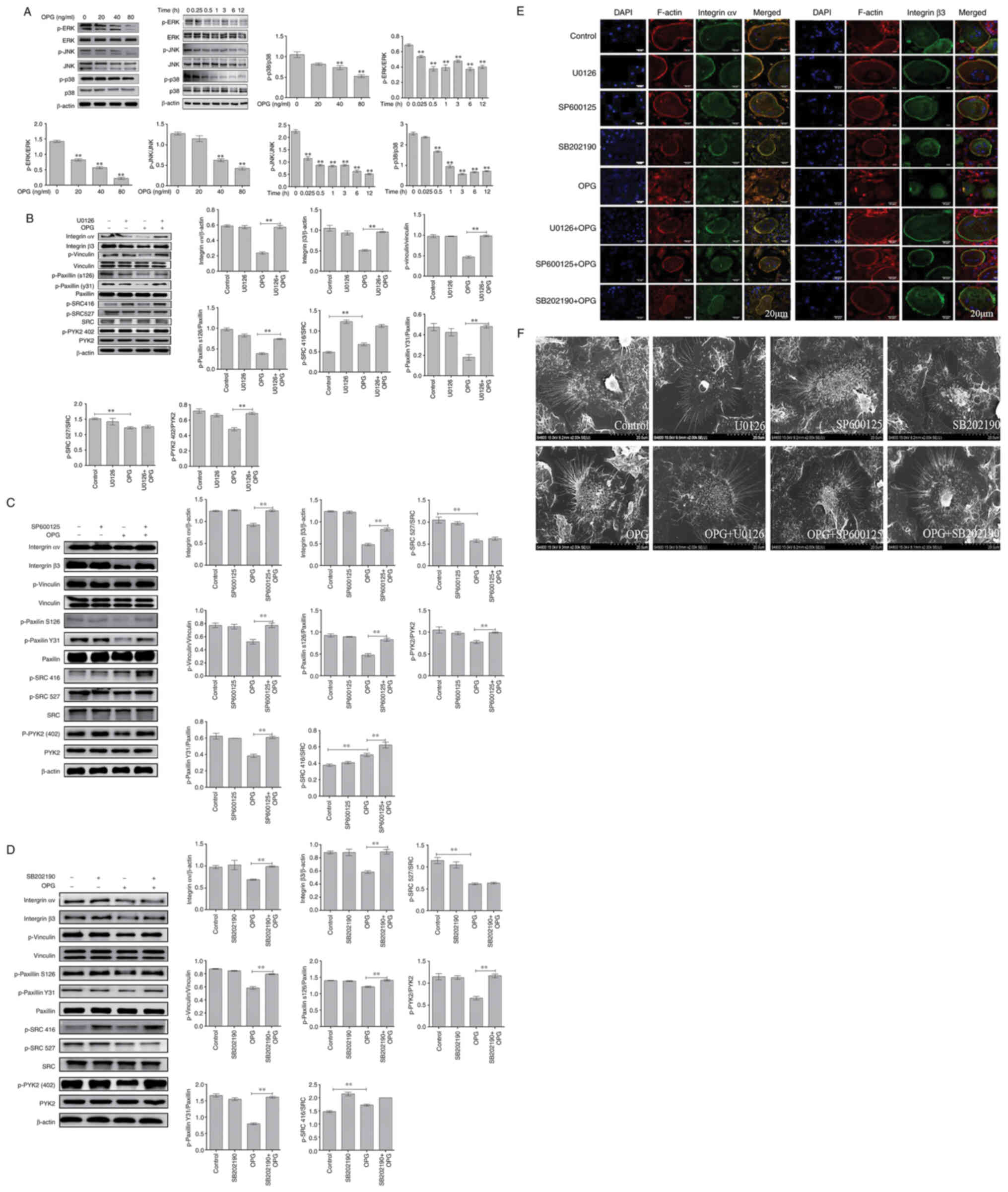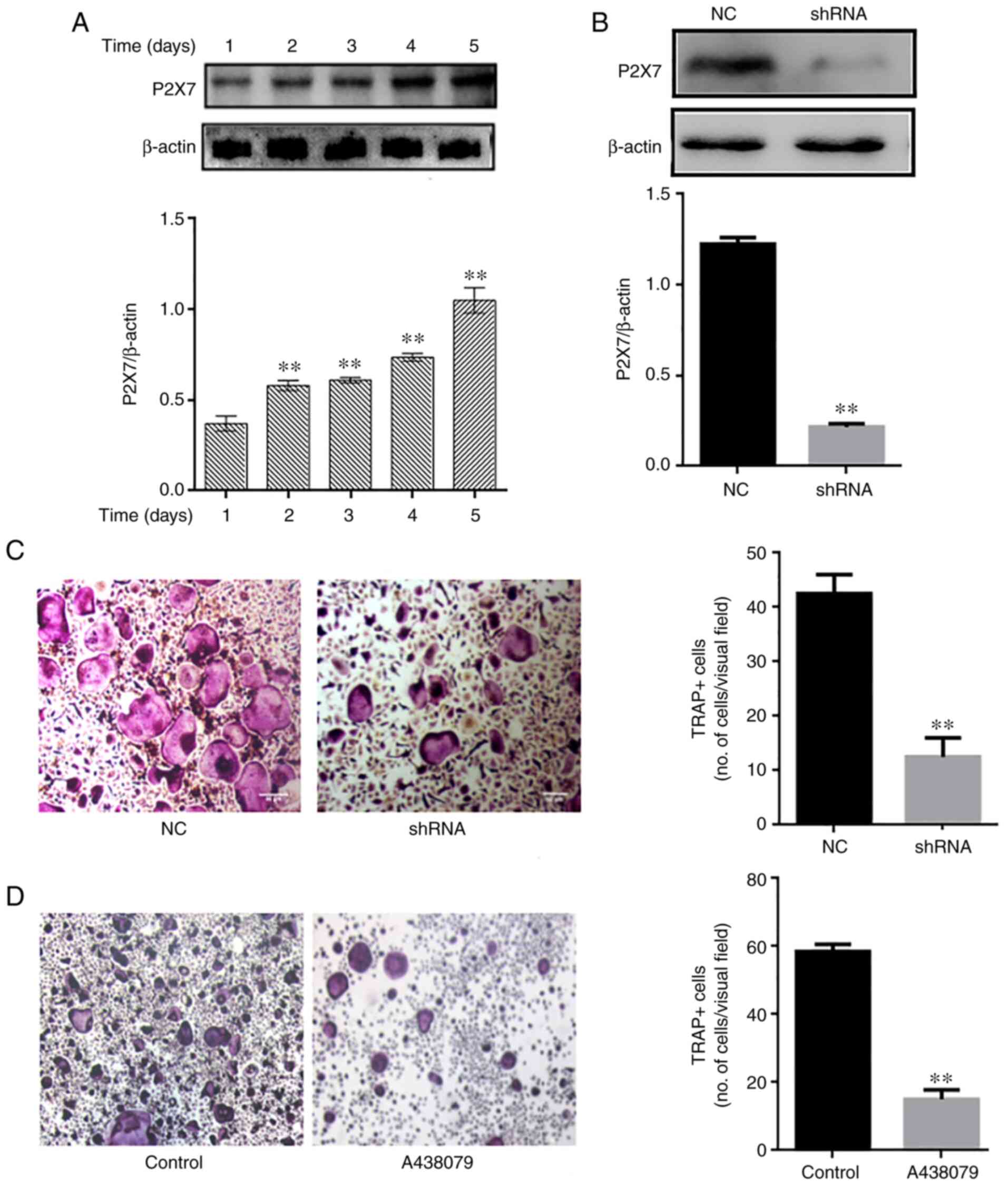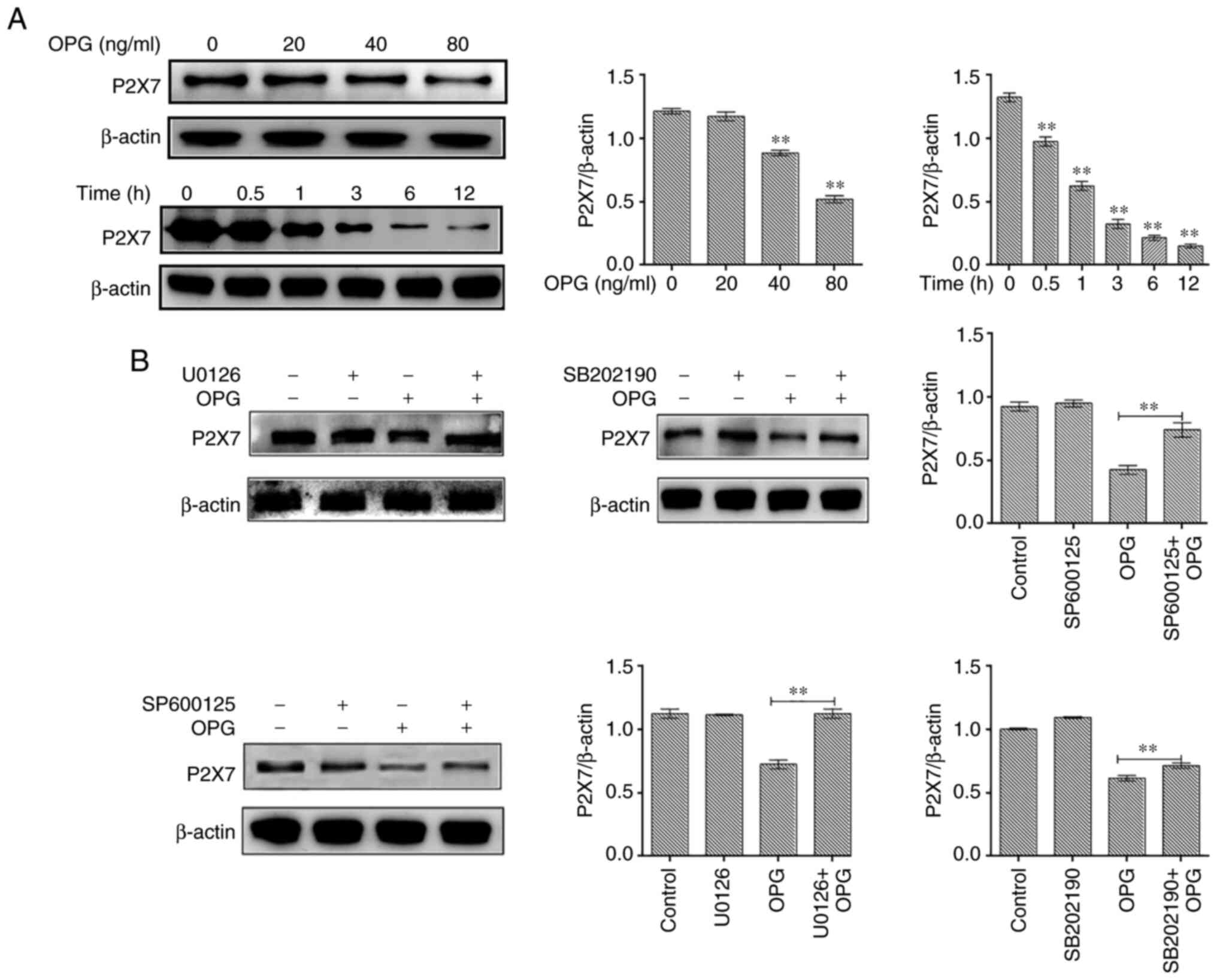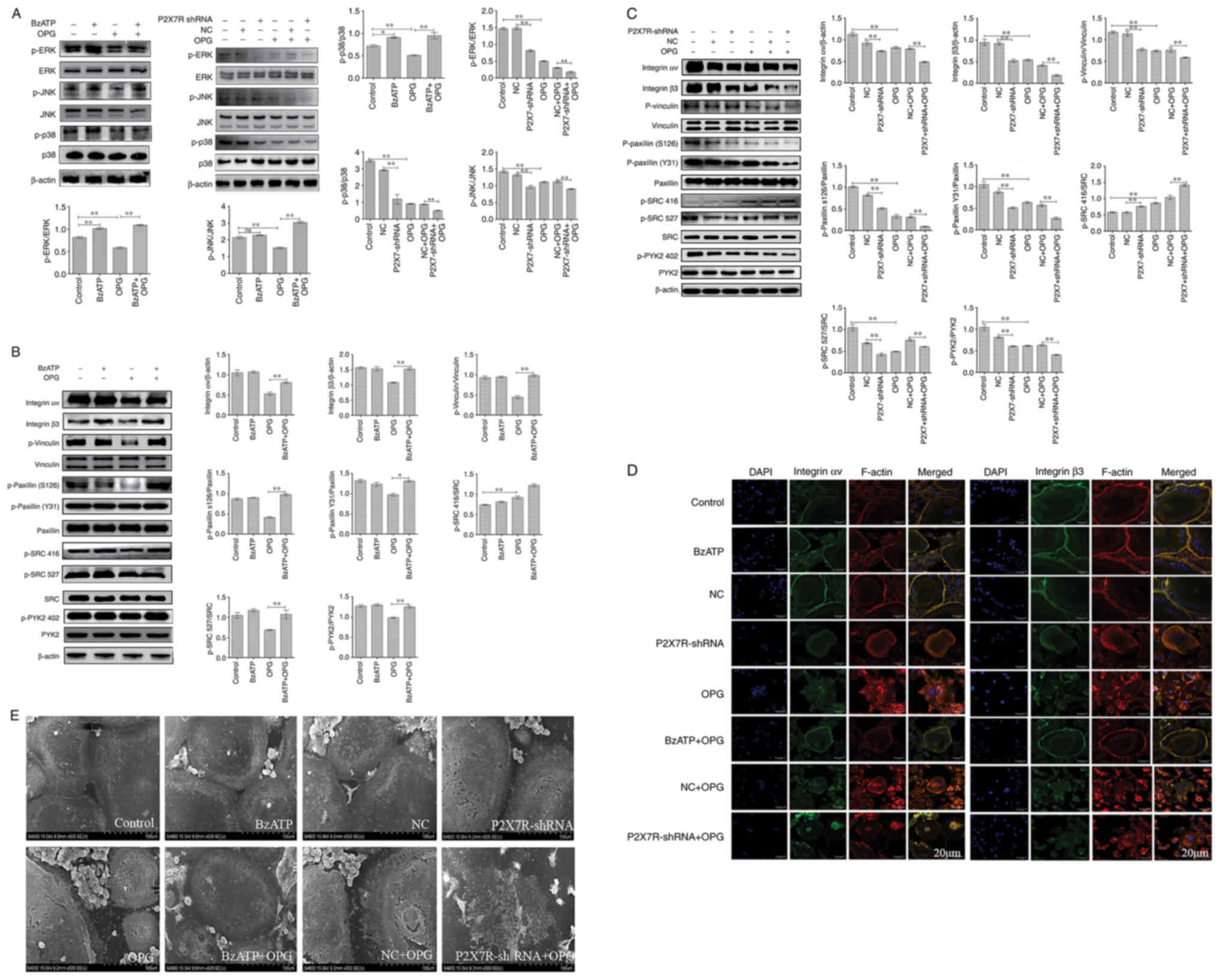|
1
|
Xiong J, Piemontese M, Onal M, Campbell J,
Goellner JJ, Dusevich V, Bonewald L, Manolagas SC and O'Brien CA:
Osteocytes, not osteoblasts or lining cells, are the main source of
the RANKL required for osteoclast formation in remodeling bone.
PLoS One. 10:e01381892015. View Article : Google Scholar : PubMed/NCBI
|
|
2
|
Lee DW, Kwon JY, Kim HK, Lee HJ, Kim ES,
Kim HJ, Kim HJ and Lee HB: Propofol attenuates osteoclastogenesis
by lowering RANKL/OPG ratio in mouse Osteoblasts. Int J Med Sci.
15:723–729. 2018. View Article : Google Scholar : PubMed/NCBI
|
|
3
|
Theoleyre S, Wittrant Y, Couillaud S,
Vusio P, Berreur M, Dunstan C, Blanchard F, Rédini F and Heymann D:
Cellular activity and signaling induced by osteoprotegerin in
osteoclasts: involvement of receptor activator of nuclear factor
kappaB ligand and MAPK. Biochim Biophys Acta. 1644:1–7. 2004.
View Article : Google Scholar : PubMed/NCBI
|
|
4
|
Zhao H, Gu J, Dai N, Gao Q, Wang D, Song
R, Liu W, Yuan Y, Bian J, Liu X and Liu Z: Osteoprotegerin exposure
at different stages of osteoclastogenesis differentially affects
osteoclast formation and function. Cytotechnology. 68:1325–1335.
2016. View Article : Google Scholar :
|
|
5
|
Zhao H, Liu X, Zou H, Dai N, Yao L, Zhang
X, Gao Q, Liu W, Gu J, Yuan Y, et al: Osteoprotegerin disrupts
peripheral adhesive structures of osteoclasts by modulating Pyk2
and Src activities. Cell Adh Migr. 10:299–309. 2016. View Article : Google Scholar : PubMed/NCBI
|
|
6
|
Oshiro T, Shiotani A, Shibasaki Y and
Sasaki T: Osteoclast induction in periodontal tissue during
experimental movement of incisors in osteoprotegerin-deficient
mice. Anat Rec. 266:218–225. 2002. View
Article : Google Scholar : PubMed/NCBI
|
|
7
|
Zheng QZ: Radioligands targeting
purinergic P2X7 receptor. Bioorg Med Chem Lett. 30:1271692020.
View Article : Google Scholar : PubMed/NCBI
|
|
8
|
Li LZ, Yue LH, Zhang ZM, Zhao J, Ren LM,
Wang HJ and Li L: Comparison of mRNA Expression of P2X receptor
subtypes in different arterial tissues of rats. Biochem Genet.
58:677–690. 2020. View Article : Google Scholar : PubMed/NCBI
|
|
9
|
Miteva A, Gaydukov A and Balezina O:
Interaction between calcium chelators and the activity of P2X7
receptors in mouse motor synapses. Int J Mol Sci. 21:20342020.
View Article : Google Scholar :
|
|
10
|
Dong Y, Chen Y, Zhang L, Tian Z and Dong
S: P2X7 receptor acts as an efficient drug target in regulating
bone metabolism system. Biomed Pharmacother. 125:1100102020.
View Article : Google Scholar : PubMed/NCBI
|
|
11
|
Agrawal A and Gartland A: P2X7 receptors:
Role in bone cell formation and function. J Mol Endocrinol.
54:R75–R88. 2015. View Article : Google Scholar : PubMed/NCBI
|
|
12
|
Wang N, Agrawal A, Jørgensen NR and
Gartland A: P2X7 receptor regulates osteoclast function and bone
loss in a mouse model of osteoporosis. Sci Rep. 8:35072018.
View Article : Google Scholar : PubMed/NCBI
|
|
13
|
Agrawal A, Buckley KA, Bowers K, Furber M,
Gallagher JA and Gartland A: The effects of P2X7 receptor
antagonists on the formation and function of human osteoclasts in
vitro. Purinergic Signal. 6:307–315. 2010. View Article : Google Scholar : PubMed/NCBI
|
|
14
|
Ma Y, Zhao H, Chile C, Wang C, Zheng J,
Song R, Zou H, Gu J, YanYuan, Bian J and Liu Z: The effect of
P2X7R-mediated Ca2+ signaling in OPG-induced osteoclasts
adhesive structure damage, Experimental Cell Research. 43:39–98.
2019.
|
|
15
|
Fathi E, Farahzadi R and Valipour B:
Alginate/gelatin encapsulation promotes NK cells differentiation
potential of bone marrow resident C-kit hematopoietic stem cells.
Int J Biol Macromol. 177:317–327. 2021. View Article : Google Scholar : PubMed/NCBI
|
|
16
|
Fathi E, Farahzadi R, Vietor I and
Javanmardi S: Cardiac differentiation of bone-marrow-resident
c-kit+ stem cells by L-carnitine increases through
secretion of VEGF, IL-6, IGF-1, and TGF-β as clinical agents in
cardiac regeneration. J Biosci. 45:922020. View Article : Google Scholar
|
|
17
|
Kwon JO, Jin WJ, Kim B, Kim HH and Lee ZH:
Myristoleic acid inhibits osteoclast formation and bone resorption
by suppressing the RANKL activation of Src and Pyk2. Eur J
Pharmacol. 768:189–198. 2015. View Article : Google Scholar : PubMed/NCBI
|
|
18
|
Tong X, Gu J, Song R, Wang D, Sun Z, Sui
C, Zhang C, Liu X, Bian J and Liu Z: Osteoprotegerin inhibit
osteoclast differentiation and bone resorption by enhancing
autophagy via AMPK/mTOR/p70S6K signaling pathway in vitro. J Cell
Biochem. Sep 6–2018.Epub ahead of print.
|
|
19
|
Song RL, Liu XZ, Zhu JQ, Zhang JM, Gao Q,
Zhao HY, Sheng AZ, Yuan Y, Gu JH, Zou H, et al: New roles of
filopodia and podosomes in the differentiation and fusion process
of osteoclasts. Genetics Mol Res. 13:4776–4787. 2014. View Article : Google Scholar
|
|
20
|
Badowski C, Pawlak G, Grichine A, Chabadel
A, Oddou C, Jurdic P, Pfaff M, Albigès-Rizo C and Block MR:
Paxillin phosphorylation controls invadopodia/podosomes
spatiotemporal organization. Mol Biol Cell. 19:633–645. 2008.
View Article : Google Scholar :
|
|
21
|
Bowden ET, Barth M, Thomas D, Glazer RI
and Mueller SC: An invasion-related complex of cortactin, paxillin
and PKCm associates with invadopodia at sites of extracellular
matrix degradation. Oncogene. 18:4440–4449. 1999. View Article : Google Scholar : PubMed/NCBI
|
|
22
|
Destaing O, Saltel F, Géminard JC, Jurdic
P and Bard F: Podosomes display actin turnover and dynamic
self-organization in osteoclasts expressing actin-green fluorescent
protein. Mol Biol Cell. 14:407–416. 2003. View Article : Google Scholar : PubMed/NCBI
|
|
23
|
Fukunaga T, Zou W, Warren JT and
Teitelbaum SL: Vinculin regulates osteoclast function. J Biological
Chemistry. 289:13554–13564. 2014. View Article : Google Scholar
|
|
24
|
Zou W, Kitaura H, Reeve J, Long F,
Tybulewicz VL, Shattil SJ, Ginsberg MH, Ross FP and Teitelbaum SL:
Syk, c-Src, the alphav-beta3 integrin, and ITAM immunoreceptors, in
concert, regulate osteoclastic bone resorption. J Cell Biol.
176:877–888. 2007. View Article : Google Scholar : PubMed/NCBI
|
|
25
|
Novack DV and Faccio R: Osteoclast
motility: Putting the brakes on bone resorption. Ageing Res Rev.
10:54–61. 2011. View Article : Google Scholar
|
|
26
|
Buckbinder L, Crawford DT, Qi H, Ke HZ,
Olson LM, Long KR, Bonnette PC, Baumann AP, Hambor JE, Grasser WA
III, et al: Prolinerich tyrosine kinase 2 regulates osteoprogenitor
cells and bone formation, and offers an anabolic treatment approach
for osteoporosis. Proc Natl Acad Sci USA. 104:10619–10624. 2007.
View Article : Google Scholar
|
|
27
|
Otero JE, Dai S, Foglia D, Alhawagri M,
Vacher J, Pasparakis M and Abu-Amer Y: Defective osteoclastogenesis
by IKKbeta-null precursors is a result of receptor activator of
NF-kappaB ligand (RANKL)-induced JNK-dependent apoptosis and
impaired differentiation. J BiolChem. 283:24546–24553. 2008.
|
|
28
|
Lacey DL, Timms E, Tan HL, Kelley MJ,
Dunstan CR, Burgess T, Elliott R, Colombero A, Elliott G, Scully S,
et al: Osteoprotegerin ligand is a cytokine that regulates
osteoclast differentiation and activation. Cell. 93:165–176. 1998.
View Article : Google Scholar : PubMed/NCBI
|
|
29
|
Khapli SM, Tomar GB, Barhanpurkar AP,
Gupta N, Yogesha SD, Pote ST and Wani MR: Irreversible inhibition
of RANK expression as a possible mechanism for IL-3 inhibition of
RANKL-induced osteoclastogenesis. Biochem Biophys Res Commun.
399:688–693. 2010. View Article : Google Scholar : PubMed/NCBI
|
|
30
|
Yoshitake F, Itoh S, Narita H, Ishihara K
and Ebisu S: Interleukin-6 directly inhibits osteoclast
differentiation by suppressing receptor activator of NF-kappaB
signaling pathways. J Biol Chem. 283:11535–11540. 2008. View Article : Google Scholar : PubMed/NCBI
|
|
31
|
Takayanagi H, Ogasawara K, Hida S, Chiba
T, Murata S, Sato K, Takaoka A, Yokochi T, Oda H, Tanaka K, et al:
T-cell-mediated regulation of osteoclastogenesis by signalling
cross-talk between RANKL and IFN-gamma. Nature. 408:600–605. 2000.
View Article : Google Scholar : PubMed/NCBI
|
|
32
|
Greenberg S, Di Virgilio F, Steinberg TH
and Silverstein SC: Extracellular nucleotides mediate Ca2+ fluxes
in J774 macrophages by two distinct mechanisms. J Biol Chem.
263:10337–10343. 1988. View Article : Google Scholar : PubMed/NCBI
|
|
33
|
McLarnon JG, Ryu JK, Walker DG and Choi
HB: Upregulated expression of purinergic P2X(7) receptor in
Alzheimer disease and amyloid-beta peptide-treated microglia and in
peptide-injected rat hippocampus. J Neuropathol Exp Neurol.
65:1090–1097. 2006. View Article : Google Scholar : PubMed/NCBI
|
|
34
|
Yiangou Y, Facer P, Durrenberger P,
Chessell IP, Naylor A, Bountra C, Banati RR and Anand P: COX-2, CB2
and P2X7-immunoreactivities are increased in activated microglial
cells/macrophages of multiple sclerosis and amyotrophic lateral
sclerosis spinal cord. BMC Neurol. 6:122006. View Article : Google Scholar : PubMed/NCBI
|
|
35
|
Jørgensen N: The purinergic P2X7 ion
channel receptor a 'repair' receptor in bone. CurrOpinImmunol.
52:32–38. 2018.
|
|
36
|
Wesselius M, Bours M, Agrawal A, Gartland
A, Dagnelie P, Schwarz P and Jorgensen N: Role of purinergic
receptor polymorphisms in human bone. Front Biosci (Landmark Ed).
16:2572–2585. 2011. View
Article : Google Scholar
|
|
37
|
Pellegatti P, Falzoni S, Donvito G,
Lemaire I and Di Virgilio F: P2X7 receptor drives osteoclast fusion
by increasing the extra-cellular adenosine concentration. FASEB J.
25:1264–1274. 2011. View Article : Google Scholar : PubMed/NCBI
|
|
38
|
Syberg S, Schwarz P, Petersen S, Steinberg
T, Jensen JE, Teilmann J and Jørgensen NR: Association between P2X7
receptor polymorphisms and bone status in mice. J Osteoporos.
2012:6379862012. View Article : Google Scholar : PubMed/NCBI
|
|
39
|
Gartland A, Buckley KA, Hipskind RA, Perry
MJ, Tobias JH, Buell G, Chessell I, Bowler WB and Gallagher JA:
Multinucleated osteoclast formation in vivo and in vitro by P2X7
receptor-deficient mice. Crit Rev Eukaryot Gene Expr. 13:243–253.
2003. View Article : Google Scholar : PubMed/NCBI
|
|
40
|
Zhang QL, Wang W, Jiang Y, A-Tuya,
Dongmei, Li LL, Lu ZJ, Chang H and Zhang TZ: GRGM-13 comprising 13
plant and animal products, inhibited oxidative stress induced
apoptosis in retinal ganglion cells by inhibiting P2RX7/p38 MAPK
signaling pathway. Biomed Pharmacother. 101:494–500. 2018.
View Article : Google Scholar : PubMed/NCBI
|
|
41
|
Jelassi B, Chantôme A, Alcaraz-Pérez F,
Baroja-Mazo A, Cayuela ML, Pelegrin P, Surprenant A and Roger S:
P2X(7) receptor activation enhances SK3 channels- and cystein
cathepsin-dependent cancer cells invasiveness. Oncogene.
30:2108–2122. 2011. View Article : Google Scholar : PubMed/NCBI
|
|
42
|
Takai E, Tsukimoto M, Harada H and Kojima
S: Autocrine signaling via release of ATP and activation of P2X7
receptor influences motile activity of human lung cancer cells.
Purinergic Signal. 10:487–497. 2014. View Article : Google Scholar : PubMed/NCBI
|
|
43
|
Fathi E, Sanaat Z and Farahzadi R:
Mesenchymal stem cells in acute myeloid leukemia: A focus on
mechanisms involved and therapeutic concepts. Blood Res.
54:165–174. 2019. View Article : Google Scholar : PubMed/NCBI
|
|
44
|
Fathi E, Farahzadi R, Sheervalilou R,
Sanaat Z and Vietor I: A general view of CD33+ leukemic
stem cells and CAR-T cells as interesting targets in acute
myeloblastsic leukemia therapy. Blood Res. 55:10–16. 2020.
View Article : Google Scholar : PubMed/NCBI
|















